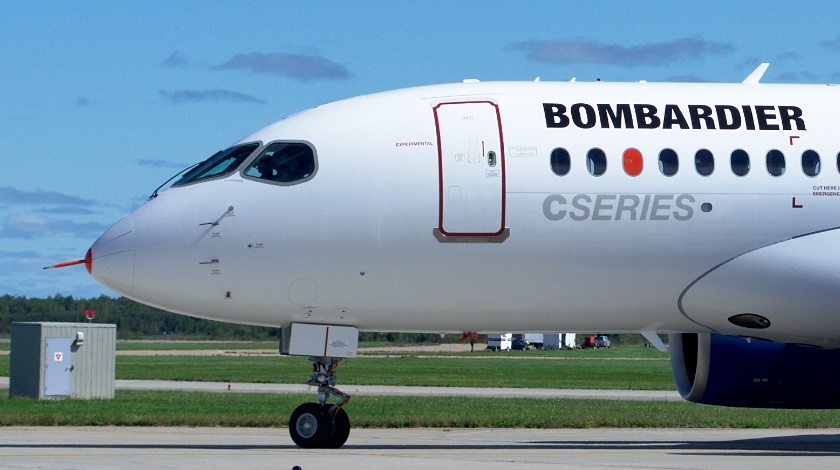Photo: wikipedia.org
Reading Time: 2 minutesBombardier has received the second and last $500 million installment of a $1 billion investment by the Québec government to own a 49.5% share of the CSeries Aircraft Limited Partnership (CSALP) joint venture with the Montreal-based manufacturer.
The cash injection helps Bombardier finance the CSeries programme through a production ramp-up with as many as 315 aircraft deliveries over the next four years, with the family of small narrowbody aircraft reaching break-even by the end.
Bombardier also says it is continuing to discuss a $1 billion investment by Canada’s federal government, although the company is careful to point out that it can complete the five-year ramp-up without additional financing.
Complying with terms of the agreement with Invetissement Québec, the provincial government’s economic development agency, Bombardier also has issued excercisable warrants to the joint venture partner for 50 million Class B shares in the parent company. The exercisable value is $1.72, which is equivalent to C$2.21 on the date the warrants were issued.
The $1 billion investment completes a year-long financial and sales turn-around for the CSeries programme after a two-year delay in development. Bombardier picked up new orders for 127 CSeries aircraft from Delta Air Lines, Air Baltic and Air Canada earlier this year, offsetting an order reduction by Russian lessor Ilyushin Finance and uncertainty over the future of Republic Airways Holdings order.
The new deals resulted in Bombardier taking a $500 million provision on the loss-making contracts, but they filled the production slots through most of the planned ramp-up to full-rate production 2020.
Bombardier also has been making progress with the first two CS100s delivered to Swiss. The two aircraft have accumulated more than 400 flight hours with six weeks of carrying passengers, with only one reported grounding lasting one day to replace a faulty component.
Bombardier is scheduled to deliver the first CS300 to AirBaltic in the fourth quarter, with the stretched, 135-seat type entering service roughly six months after the 110-seat CS100.

